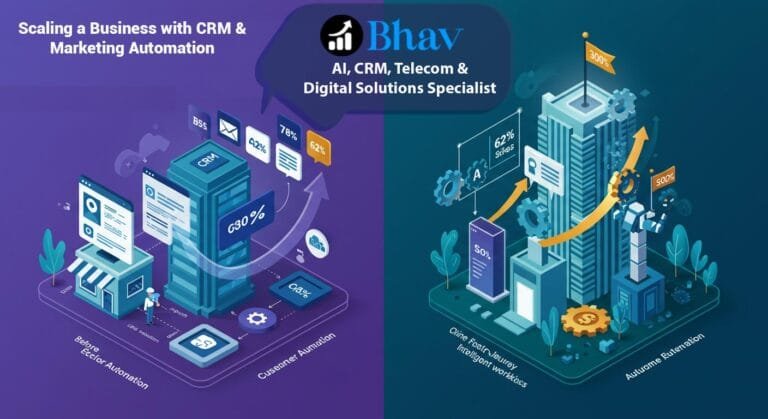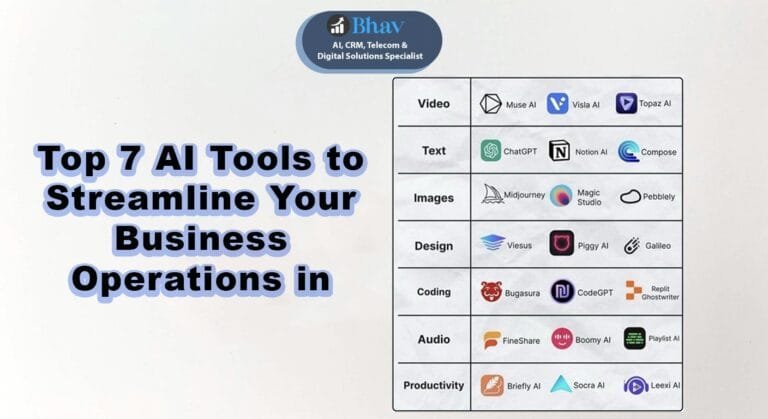
Introduction to AI-Driven Analytics in Marketing
In today’s rapidly evolving marketing landscape, businesses are increasingly turning to artificial intelligence (AI) to harness data in ways that were previously unimaginable. AI-driven analytics, which employs sophisticated algorithms and statistical models, allows marketers to sift through vast amounts of data to glean insights that can significantly enhance their campaigns. With traditional analytics, marketers often faced limitations in data interpretation, leading to reactive rather than proactive strategies. However, by integrating AI technologies, organizations can dramatically transform their approach to data-driven decision-making.
The significance of AI-driven analytics lies in its ability to process and analyze data at a scale and speed that outpaces human capabilities. It enables marketers to uncover patterns and trends that might otherwise go unnoticed, thus facilitating more informed strategic decisions. For instance, predictive analytics, powered by AI, allows marketers to anticipate consumer behavior based on past interactions, enabling them to tailor communications and offers to specific segments of their audience.
Moreover, the integration of AI tools in analytics not only enhances data interpretation but also boosts overall marketing strategies. By utilizing machine learning algorithms, marketers can identify key performance indicators and optimize campaigns in real-time, resulting in a more agile marketing approach. This level of insight allows for a deeper understanding of customer preferences, contributing to improved customer experiences and ultimately, higher return on investment (ROI).
In essence, the advent of AI-driven analytics marks a transformative phase in the marketing world, equipping businesses with the tools necessary to navigate complexities and capitalize on opportunities. As the competitive landscape grows ever more challenging, those who leverage AI technologies will undoubtedly find themselves at an advantage, leading to enhanced marketing effectiveness and success.
Understanding Marketing ROI
Marketing Return on Investment (ROI) is a critical metric that quantifies the effectiveness and profitability of marketing initiatives. It serves as a financial measure to determine the return generated from marketing expenditures relative to the cost incurred. Understanding marketing ROI is essential for businesses aiming to allocate resources efficiently, formulate strategies, and assess the success of their marketing efforts.
To calculate marketing ROI, businesses typically use the formula: (Net Profit from Marketing / Cost of Marketing Investment) x 100. This formula yields a percentage that indicates the return per dollar spent on marketing. A higher ROI suggests a more effective marketing campaign, while a lower ROI can signal a need for improvement or reevaluation of marketing strategies.
Common metrics to consider when calculating marketing ROI include customer acquisition cost (CAC), customer lifetime value (CLV), and conversion rates. Customer acquisition cost refers to the total expenditure required to gain a new customer, encompassing all marketing and sales expenses. Conversely, customer lifetime value estimates the total revenue a business can expect from a customer throughout their relationship. Conversion rates measure the percentage of leads that are converted into paying customers, offering insights into the efficiency of marketing campaigns.
By analyzing these metrics, businesses can gain valuable insights into marketing performance and profitability. Understanding marketing ROI not only helps in recognizing successful strategies but also identifies areas for enhancement, guiding businesses in making informed decisions. Furthermore, effective ROI analysis enables companies to justify their marketing budgets to stakeholders and ensures alignment of marketing goals with overall business objectives.
The Role of Data in Driving Marketing Decisions
In the contemporary landscape of marketing, data serves as the foundation upon which strategies are built. Marketers now have access to a multitude of data types, each providing unique insights that inform decision-making processes. Among these, customer behavior data is particularly significant. It sheds light on how consumers interact with products, what influences their purchasing decisions, and which marketing channels are most effective. By analyzing this data, marketers can segment audiences, personalize messaging, and optimize campaign strategies to foster stronger engagement.
Additionally, demographic data plays a crucial role in tailoring marketing efforts. It includes information such as age, gender, income levels, and geographic locations, allowing marketers to create targeted campaigns that resonate with specific audience segments. Utilizing AI-driven analytics, marketers can aggregate and interpret this demographic information rapidly, identifying trends and adjusting strategies accordingly. The ability to assess demographic factors helps ensure that marketing campaigns are not only relevant but also effective in maximizing reach and impact.
Sales metrics are equally vital to the data-driven marketing approach. Understanding the performance of past campaigns through metrics like conversion rates, customer acquisition costs, and average order value provides marketers with an empirical basis for shaping future initiatives. AI technologies enhance this aspect by enabling real-time analysis, predictive modeling, and performance forecasting, which allows for proactive adjustments throughout the campaign lifecycle.
By synthesizing these diverse data types, AI empowers marketers to uncover actionable insights and make informed decisions. This holistic approach ensures strategies are not merely guesswork but are grounded in comprehensive research and analytics. As a result, organizations can optimize their marketing investments, ultimately driving a higher return on investment (ROI). Embracing data as a cornerstone of marketing strategy is essential for staying competitive in a highly dynamic marketplace.
How AI Enhances Data Analysis Capabilities
Artificial Intelligence (AI) has transformed the way businesses analyze data, unlocking profound insights that were once challenging to uncover. Central to this transformation are technologies like machine learning and predictive analytics, which significantly enhance data analysis capabilities. Utilizing these tools allows for the rapid processing of vast datasets, a task that would take human analysts considerable time and effort.
Machine learning algorithms can sift through enormous volumes of data, detecting patterns and correlations that may elude human observation. These algorithms learn from previous data inputs, continually improving their accuracy and efficiency over time. This capability enables organizations to derive actionable insights, leading to informed decision-making in real-time. For instance, financial institutions employ machine learning techniques to identify potentially fraudulent activities by analyzing trends in transactional data that would typically go unnoticed by traditional analysis methods.
Predictive analytics complements machine learning by providing forecasting capabilities. By analyzing historical data, predictive models can project future trends and behaviors. This facet of AI not only assists businesses in anticipating market shifts but also aids in developing targeted marketing strategies, enhancing customer retention, and optimizing resource allocation. Companies can predict customer preferences and buying habits, thereby tailoring their offerings to meet demand more effectively and efficiently.
The integration of AI-driven analytics into business operations also improves the overall accuracy of data interpretation. AI systems minimize human error, ensuring that data analysis is both reliable and consistent. Furthermore, the automation of mundane data processing tasks allows human analysts to focus on more strategic and creative endeavors rather than getting bogged down in repetitive tasks.
In conclusion, AI technologies significantly enhance data analysis capabilities by processing larger datasets and revealing insights that drive improved decision-making and operational efficiency.
Case Studies: Successful Implementation of AI Analytics in Marketing
Examining the integration of AI-driven analytics in marketing strategies offers valuable insights into how businesses leverage this technology to enhance their return on investment (ROI). A prime example is Coca-Cola, which has utilized AI to refine its marketing campaigns. By employing data analytics and machine learning algorithms, Coca-Cola analyzed consumer behavior and preferences on social media platforms. This insight allowed the brand to create tailored marketing campaigns that increased engagement and ultimately resulted in a measurable increase in sales. The use of AI-driven analytics helped identify key demographics and optimize advertising spending, contributing to a higher ROI.
Another notable case is that of Netflix, which has transformed the way marketing is conducted within the entertainment industry. Through sophisticated AI algorithms, Netflix monitors user viewing patterns and preferences. This data allows the company to create highly personalized marketing strategies and content recommendations. As a result, Netflix not only enhances user satisfaction but also significantly reduces churn rates. The precise targeting enabled by AI analytics has contributed to the company’s expansive subscriber growth, demonstrating a clear link between AI utilization and ROI improvement.
Moreover, the fashion retailer ASOS implemented AI-driven analytics to streamline its inventory management and marketing efforts. By analyzing customer data, the company was able to predict trends, optimize stock levels, and target marketing campaigns effectively. This proactive approach not only minimized excess inventory costs but also improved conversion rates through highly targeted advertisements that resonated with specific customer segments. The outcome was a marked increase in the company’s profitability, underscoring the potential of AI-driven analytics in enhancing marketing efficacy and ROI.
Challenges and Limitations of AI-Driven Analytics
The integration of AI-driven analytics into marketing strategies has transformed the way organizations approach data. However, despite its numerous advantages, several challenges and limitations must be addressed to ensure effective implementation.
One of the foremost concerns revolves around data privacy. As organizations leverage AI technologies to analyze customer behavior and preferences, they often collect vast amounts of sensitive data. This raises significant ethical and legal issues, especially with the rise of data protection regulations like GDPR. Organizations must navigate these complexities carefully to avoid costly fines and damage to their reputation, making data governance a critical component of AI analytics.
Another challenge is technology integration. Many businesses, particularly smaller ones, struggle with incorporating advanced AI tools into their existing systems. Often, these tools require substantial investments in infrastructure, software, and training to utilize effectively. The lack of compatibility between legacy systems and new AI technologies can result in inefficiencies and hinder the seamless flow of information necessary for precise analytics. This barrier can lead to missed opportunities, undermining the potential ROI that AI-driven analytics promises.
Furthermore, the need for skilled personnel poses another significant hurdle. Although AI tools are designed to be user-friendly, they require a degree of expertise to interpret complex data insights accurately. The demand for data scientists and marketing professionals proficient in AI technologies outpaces supply, leading to difficulties in recruitment and retention. Organizations may find themselves at a disadvantage if they do not prioritize workforce development or fail to invest in continuous training programs for their existing employees.
In conclusion, while AI-driven analytics holds great promise for optimizing marketing efforts, addressing the associated challenges is essential. By understanding and mitigating issues related to data privacy, technology integration, and workforce skillsets, businesses can maximize the benefits of AI while maintaining trust and compliance.
Future Trends in AI and Marketing Analytics
The landscape of marketing analytics is continually evolving, with artificial intelligence (AI) at the forefront of this transformation. As we look to the future, several emerging trends within AI-driven marketing analytics are poised to redefine how businesses approach their marketing strategies. One notable trend is the advancement of algorithms that drive predictive analytics. These sophisticated algorithms will enhance the ability to predict customer behavior with unprecedented accuracy, enabling marketers to tailor their campaigns more effectively to meet consumer needs.
Another significant development is the enhancement of personalization through AI. As organizations gather vast amounts of data, machine learning models are becoming increasingly adept at analyzing this information to create personalized marketing experiences. The integration of AI can facilitate the delivery of more relevant content, offers, and messaging to individual consumers, thus improving engagement and conversion rates. This shift towards hyper-personalization not only meets customer expectations for tailored interactions but is also expected to be a major driver of customer loyalty in the future.
Moreover, automation will continue to play a crucial role in marketing analytics, simplifying processes that once required significant human intervention. Innovations in AI technology are expected to advance predictive analytics and real-time data processing, allowing businesses to automate routine tasks such as reporting and campaign optimization. This increased automation allows marketing teams to focus their efforts on strategic decision-making rather than tedious data manipulation.
Overall, as we progress into a future driven by AI, these integrations will likely lead to a more data-centric approach to marketing. Companies that embrace these trends in AI and marketing analytics will not only enhance their ROI but also gain a competitive edge in an increasingly crowded marketplace.
Best Practices for Implementing AI-Driven Analytics
Implementing AI-driven analytics can significantly enhance marketing strategies, but success largely depends on how effectively these tools are integrated into existing processes. One of the primary best practices is to ensure that AI tools are aligned with an organization’s overall marketing objectives. Start by identifying specific business goals that the analytics tool will address. This will help in selecting the appropriate technology and tailoring data insights to meet the organization’s needs.
Additionally, fostering a data-driven culture is crucial for the successful adoption of AI-driven analytics. This begins with training marketing teams on the importance of data and how to leverage these insights for decision-making. Encourage collaboration among team members to share findings derived from analytics, as this collective knowledge can lead to more refined strategies. It’s essential to promote an environment where data is valued and considered a vital asset in the marketing process.
Continuous optimization of marketing campaigns based on analytical insights is another critical aspect of implementing AI-driven analytics. Marketers should regularly review performance metrics provided by the AI tools, adjusting their campaigns in real time. This allows for the identification of trends and patterns, enabling marketers to respond promptly to changes in consumer behavior. Techniques such as A/B testing should be employed to experiment with different approaches and compare results, ensuring the most effective strategies are employed.
Lastly, always be open to adapting and evolving with emerging technologies in AI analytics. The field is rapidly advancing, and staying updated on new tools and best practices can provide a competitive edge. By integrating AI-driven analytics thoughtfully and fostering a culture that embraces data, marketers can effectively boost ROI and drive successful marketing initiatives.
Conclusion
As we have explored throughout this blog post, the integration of artificial intelligence (AI) within marketing strategies offers substantial advantages, particularly in enhancing return on investment (ROI). AI-driven analytics enable businesses to gather and analyze large volumes of data with remarkable accuracy and speed. This capability transforms raw data into actionable insights, allowing marketing teams to fine-tune their campaigns and target their audiences more effectively. By leveraging machine learning algorithms, companies can predict consumer behavior, optimize ad spend, and ultimately drive higher conversion rates.
Moreover, AI technologies facilitate real-time monitoring of marketing performance, enabling organizations to make informed decisions promptly. This immediacy in analysis not only improves the efficiency of marketing efforts but also reduces wasteful expenditure by identifying underperforming channels and reallocating resources to more effective ones. Importantly, AI also fosters personalization at scale, offering tailored messaging that resonates with individual consumers’ preferences, which significantly enhances customer engagement and loyalty.
As competition within the market continues to intensify, businesses that embrace AI-driven analytics are better positioned for growth. The essential nature of these technologies cannot be overstated; they provide a competitive edge, allowing organizations to adapt swiftly to changing market conditions. In light of these numerous benefits, it is evident that investing in AI-driven marketing analytics is not merely an advantageous strategy but a critical necessity for businesses striving to thrive in today’s dynamic environment.
In conclusion, the impact of AI on marketing ROI is profound, as it transforms how organizations operate and engage with consumers. By adopting these innovative technologies, businesses are not only enhancing their marketing effectiveness but also paving the way for sustained profitability and success in the digital age.



